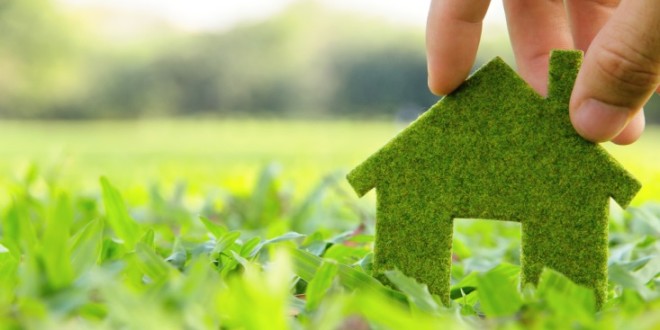Green and smart buildings gain attention due to the growing demand for eco-friendly and energy-efficient solutions. Awareness of conventional construction’s environmental and well-being impact prompts increased emphasis on green and smart buildings. Property owners and managers have the chance to make their buildings into energy-efficient, environmentally friendly, and intelligent settings by using cutting-edge technologies and eco-friendly practices. These structures offer several advantages to the residents in addition to helping to create a healthier world.
How do sustainable materials and design contribute to making a building green?
Making a building environmentally friendly requires using sustainable materials and design strategies. Using eco-friendly design techniques and sustainable building materials can considerably decrease the environmental effect of a structure. Ethically sourced sustainable materials with low embodied energy and recycled content contribute to this reduction in environmental impact.
They aid in reducing waste production, resource usage, and greenhouse gas emissions. Eco-friendly design techniques prioritize energy efficiency, natural light utilization, air circulation, and building life cycle considerations. Buildings may support a more sustainable future by minimizing their environmental impact and fostering a healthier and greener built environment by using sustainable materials and design.
Things That Make Building Green And Smart
There are various strategies and technologies one can explore to make your building green and smart, reducing its environmental footprint while enhancing its functionality.
Efficient HVAC System
Buildings may be made more environmentally friendly by using environmentally friendly resources and design strategies. Recycled lumber and recycled metal are examples of eco-friendly construction materials with low absorbed energy and carbon footprint that may be used to lessen the environmental effect of structures. By reducing heat loss, boosting natural light, and improving thermal comfort, the use of adequate insulation, energy-efficient windows, and passive design techniques optimizes energy use. Sustainable design also takes into account adaptability and flexibility, allowing areas to be reused and minimizing the demand for new construction. Sustainable materials and design concepts enable buildings to minimize resource usage, waste production, and environmental impact.
Renewable Energy Sources
An essential part of making a building green is utilizing renewable energy sources. The production of power from sunlight is made possible by the installation of solar panels on roofs and building facades. Using clean and sustainable energy, these panels may be used to power a variety of building amenities including lights, HVAC systems, and electronic gadgets. In addition, depending on the location and viability of the structure, thinking about the incorporation of wind turbines or geothermal systems might diversify renewable energy sources and further lessen dependency on the grid. Buildings may considerably reduce their carbon footprint while helping to a more sustainable future by using these renewable energy options.
Water Conservation
Building’s sustainability improved by using water-saving measures. Water use considerably decreased by installing low-flow toilets, showerheads, and faucets. Providing enough functionality, fixtures to use less water. Collecting rainwater using collection systems for non-potable purposes like irrigation, toilet flushing, and gardening is an efficient method. As a result, there is less need to get freshwater for these uses. And yet another way to conserve water is by putting greywater systems in place. These systems treat and reuse water from showers, sinks, and laundry, reducing water waste and promoting more efficient resource utilization.
Smart Building Automation
The advantages of integrating smart building automation systems for green and smart buildings extend beyond effective administration. These cutting-edge technologies optimize energy use and improve overall commercial building security system by combining sensors, data analytics, and artificial intelligence. The systems continually track occupancy levels and modify lighting, heating, and cooling to match actual demand. This results in considerable energy savings. The automation systems may also identify and take care of maintenance concerns quickly, decreasing energy waste and lowering operating expenses.
Smart building automation systems not only enhance occupant comfort and well-being but also improve safety and security. By integrating security features such as access control and video systems, building owners can enhance overall property security while efficiently monitoring energy usage. Additionally, these systems contribute to effective waste management and recycling efforts.
By leveraging automation and advanced data analysis, building owners can create environmentally friendly and sustainable buildings that provide residents with a comfortable living environment. The integration of smart automation in buildings enables energy efficiency, increased security, and streamlined waste management, resulting in a greener and smarter building overall.
How House Lightning System Make Building Smart And Green?
Adopting energy-efficient lighting systems is one of the simplest methods to green your building. LED lights are alternative to conventional incandescent bulbs they use a lot less energy and have a longer lifespan. Anywhere you can, provide natural illumination by installing big windows, skylights, or light tubes. Use sensors in smart lighting systems to alter light levels in response to occupancy and the presence of natural light to further optimize energy use.
Conclusion
Transforming your building into a green and smart space necessitates a comprehensive approach that encompasses energy efficiency, renewable energy, water conservation, smart automation, and sustainable design. By incorporating these strategies, you can make a substantial difference in reducing the environmental footprint of your building. This approach not only lowers energy consumption and costs but also enhances occupant comfort and well-being. Moreover, embracing green and smart building practices demonstrates a commitment to sustainability and can increase the value and desirability of the property in the long term. By adopting these practices, you contribute to a more sustainable future while reaping numerous benefits for both the environment and your building’s overall performance.




